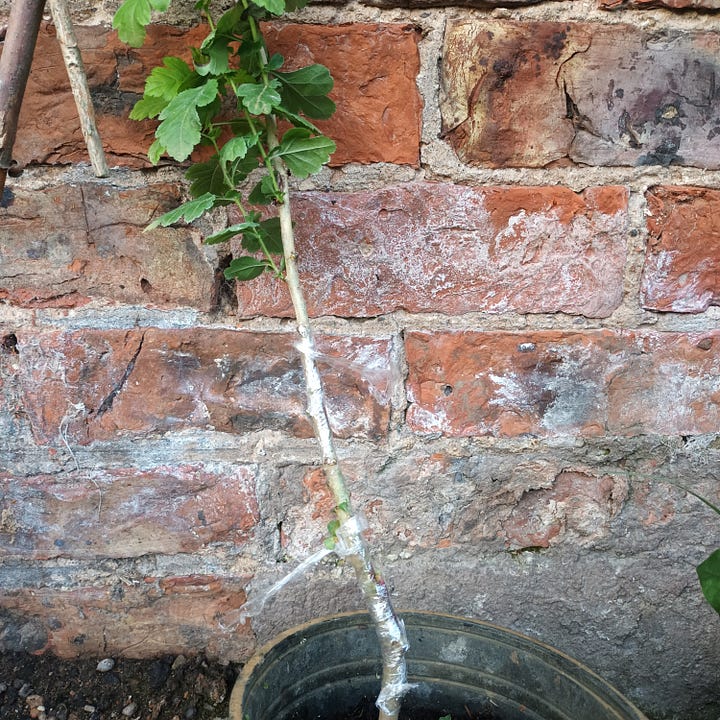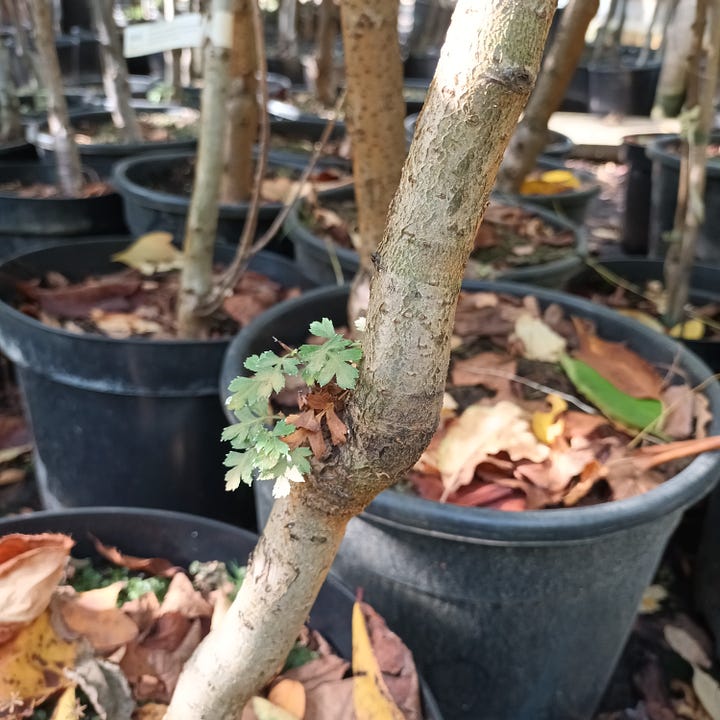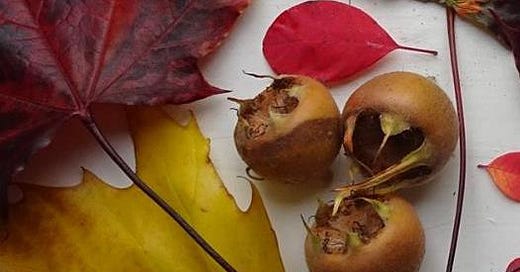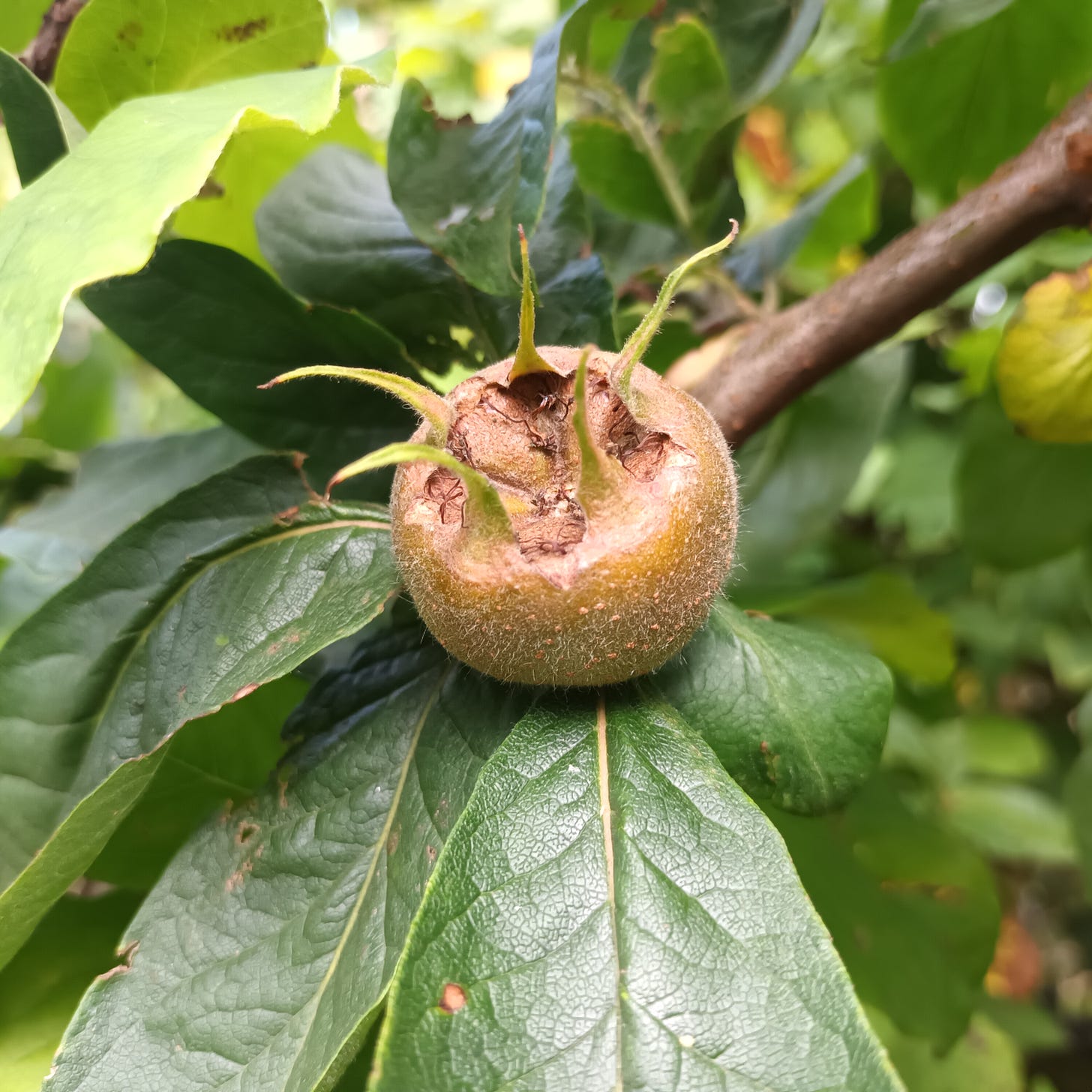Medlars: a blast from the past
A few months ago I came across a fifteenth-century gardening book, which explains how fruit trees can be grafted: surgically spliced onto new root system, to give the best qualities of root and tree. The book explain that apple trees can only be grafted onto other apples. Pears, though, are different: they and other fruit trees may be grafted onto roots of a different genus, to make a really radically hybrid tree. With his pear tree, ‘I have in mind,’ writes the author, ‘to graft him onto a hawthorn’.
In the nursery, our fruit trees are all grafted stock, which is standard commercial practice. Any fruit tree you buy will be grafted. Most fruit trees we sell are grafted onto highly-bred rootstocks with scientific designations: M25 and MM106; Quince A or Quince C. These names reflect the careful selection processes of the Malling-Merton research station in the first half of the twentieth century. It all feels very high-tech; very modern.
We have dozens varieties of apples and plums and pears. There are cherries and peaches and apricots, and quinces and nectarines and even almonds. But for my money, the most underrated fruit tree is the medlar. Raw, medlar fruit is even more tart and hard than its close cousin the quince: it isn’t an obvious thing to eat. But once the fruit have been frosted and left on the tree until they drop, they do soften, turning muscovado-sugar-brown, and tasting a bit like dates. The best thing to do with medlars is to make jelly, which comes out deep reddish-pink, with a musky, floral flavour.
But medlars are well worth growing for their decorative value alone. They are small and elegant trees, with naturally arching, open growth that doesn’t need regular pruning. In spring they have lovely, cupped white flowers, rather like a large, pale version of apple blossom. In autumn, their leaves turn deep yellow, orange and red, often barred with black. Their branches are studded with crown-like fruit. Medlar fruit is often compared to an extra-large rosehip; it does look a bit like a giant hip from a rosa rugosa, but it’s flatter and more dimpled, and the russeted colour of a good russet apple. The beautiful, semi-formal gardens at Newnham College, Cambridge, include medlars amongst their specimen trees; Dan Pearson writes beautifully about the ‘ancient feeling’ that medlars in gardens evoke.
This ‘ancient feeling’ comes partly from the obscurity of the medlar in the present day, but also from the hedgerow colours of the autumn foliage and the small, starry fruits. We’ve become accustomed to apples and pears that have been bred to weigh down the branches of the trees that bear them, and so a tree whose branches still arch beautifully even when loaded with fruit seems closer to the wild dog-roses and blackthorn than to orchard trees. And that association with the hedgerow is apt. When I went to trim the suckers from our medlar trees, I found bunches of hawthorn leaves and spines: our medlars are grafted onto ordinary, hedgerow-loving hawthorns, just as they would have been five hundred years ago.


***
Check us out on Instagram: https://www.instagram.com/vertigrowplant/
Vertigrow Plant Nurseries, Lawnswood House, Malton Road, York, YO32 9TL





